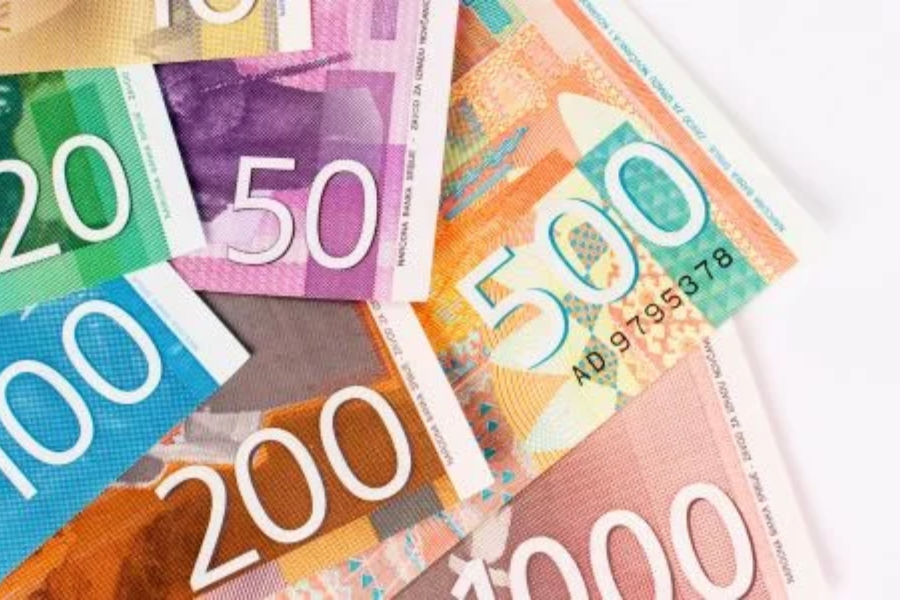In recent years, there has been growing speculation and discussion around the potential shift in global currency systems, particularly with the rise of alternative currencies. One of the most prominent of these is the dinar – specifically, the Iraqi dinar (IQD), but also other forms like the Jordanian dinar (JOD) and Kuwaiti dinar (KWD), which have been central to conversations about future financial landscapes. As the global economic and political environment evolves, many analysts are considering the implications of a new architecture in which the US dollar plays a diminished role.
This article will delve into the key aspects of this emerging landscape, discussing the historical context, the rise of the dinar as a potentially influential currency, and what this shift could mean for the global economy.
The Historical Context of the Dinar
The dinar has been a significant currency in the Middle East for centuries. Derived from the Roman denarius, the dinar has evolved over time and been adopted by various countries in the region. Today, it remains a central currency for many nations in the Arab world, particularly Iraq, Jordan, and Kuwait. However, the Iraqi dinar has gained particular attention in recent years, due to its potential for revaluation.
Following the Gulf War and the collapse of the Iraqi regime, Iraq’s economy faced severe challenges, including hyperinflation, war reparations, and economic sanctions. These circumstances led to a devaluation of the Iraqi dinar and its subsequent instability in the global market. However, since the US invasion of Iraq in 2003, there have been efforts to stabilize the dinar and reform the country’s monetary policy.
As Iraq seeks to rebuild its economy, there has been a growing belief among some investors that the Iraqi dinar, in particular, could see a significant rise in value, especially if the country’s oil wealth continues to grow and the government stabilizes its economy. The speculative nature of these investments has made the dinar a topic of interest for investors looking to diversify their portfolios.
The Decline of the US Dollar’s Dominance
Historically, the US dollar has been the dominant currency in the global financial system. As the world’s primary reserve currency, it has been used in the majority of international trade transactions, investments, and central bank reserves. However, in recent years, there has been increasing discourse about the potential for a decline in the dollar’s dominance.
A variety of factors are contributing to this shift, including the rise of emerging economies like China and India, the decline of US geopolitical influence, and the growing use of other currencies like the euro and the Chinese yuan. As countries seek to reduce their reliance on the US dollar, they are looking for alternatives that can serve as a store of value, medium of exchange, and unit of account in international trade.
The Role of the Dinar in a New Economic Architecture
As global economic power begins to shift, many are beginning to look toward the dinar and other regional currencies as possible alternatives to the US dollar. The dinar’s role in this emerging global architecture is being considered for several reasons:
1. Oil Reserves and Energy Markets
The Middle East, particularly countries like Iraq, Kuwait, and Saudi Arabia, is home to some of the world’s largest oil reserves. As the demand for energy continues to drive global economic activity, the countries in this region are becoming increasingly important players in the global economy. Iraq, for instance, holds one of the largest untapped reserves of oil, and its economy is heavily reliant on oil exports.
Given that oil transactions have historically been conducted in US dollars (a practice known as the “petrodollar system”), there is growing interest in diversifying away from the dollar in these transactions. The dinar, as the currency of one of the world’s largest oil producers, could potentially play a significant role in a future where the petrodollar system is no longer the dominant force in global energy markets.
2. Regional Cooperation and Stability
Another key factor driving interest in the dinar is the potential for regional cooperation in the Middle East. If countries in the region can achieve greater political and economic stability, it could create an environment in which regional currencies like the dinar become more viable for use in trade and investment.
For example, if Iraq’s economy continues to stabilize and grow, and if political tensions in the region subside, the dinar could emerge as a more trusted and valuable currency in the Middle East. This could lead to increased use of the dinar in regional trade agreements, potentially challenging the dominance of the US dollar in the region.
3. Speculation and Investment Opportunities
In addition to its potential role in a new economic architecture, the dinar has garnered significant attention from speculative investors. Given the devaluation of the dinar in the aftermath of the Iraq War, some believe that the currency is poised for a major revaluation. If Iraq’s economy continues to recover, the dinar could increase in value, providing substantial returns for early investors.
However, it is important to note that investing in the dinar carries significant risks. The Iraqi economy is still recovering from decades of conflict, and while the country has vast natural resources, it also faces challenges related to political instability, corruption, and infrastructure deficiencies. As such, anyone considering investing in the dinar should be aware of the risks involved and conduct thorough research.
4. The Dinar’s Role in Diversifying Global Reserves
As central banks around the world seek to diversify their foreign exchange reserves away from the US dollar, the dinar could potentially play a role in this shift. Countries looking to reduce their exposure to the dollar may consider holding dinars as part of a broader strategy to protect their reserves from the risks associated with a depreciating dollar.
For instance, Iraq’s oil wealth and the potential for economic growth could make the dinar an attractive option for countries seeking to diversify their foreign exchange holdings. In this sense, the dinar could become a key player in the emerging multipolar world of currency reserves.
The Challenges and Risks of the Dinar’s Rise
While the potential for the dinar to play a larger role in the global economy is intriguing, there are several challenges and risks that need to be addressed. These include:
1. Political Instability and Conflict
One of the biggest risks to the dinar’s rise is the ongoing political instability in Iraq and the wider Middle East. The region has been plagued by conflict for decades, and while there have been efforts to stabilize Iraq, the country still faces significant challenges related to security, governance, and corruption. This makes the dinar a highly speculative investment, and anyone considering it should be aware of the geopolitical risks involved.
2. Inflation and Economic Uncertainty
Iraq’s economy has been subject to high levels of inflation, particularly in the years following the US invasion. While there have been efforts to stabilize the currency, inflation remains a concern. If inflation continues to rise, the value of the dinar could decline, making it a less attractive option for investors and central banks.
3. Global Market Dynamics
The success of the dinar as a global currency will also depend on the broader dynamics of the international market. The continued dominance of the US dollar, combined with the rise of other currencies like the euro and the yuan, may limit the dinar’s ability to challenge the dollar in a meaningful way. Additionally, countries may be hesitant to adopt a currency that is still recovering from significant devaluation.
Conclusion
As the world moves towards a more multipolar economic system, currencies like the dinar are emerging as potential alternatives to the US dollar. While the rise of the dinar may not happen overnight, its role in the global financial system is likely to become more significant as Iraq’s economy continues to recover and as the global landscape shifts. However, investors and policymakers must be aware of the risks and challenges associated with this transition, including political instability, inflation, and global market dynamics.
Ultimately, the future of the dinar will depend on a variety of factors, including Iraq’s economic development, regional cooperation, and the broader shift away from the US dollar as the world’s primary reserve currency. As these developments unfold, the dinar could play an important role in shaping the future of global finance.
Explore In-Depth Features and Insights at VentsMagazine

